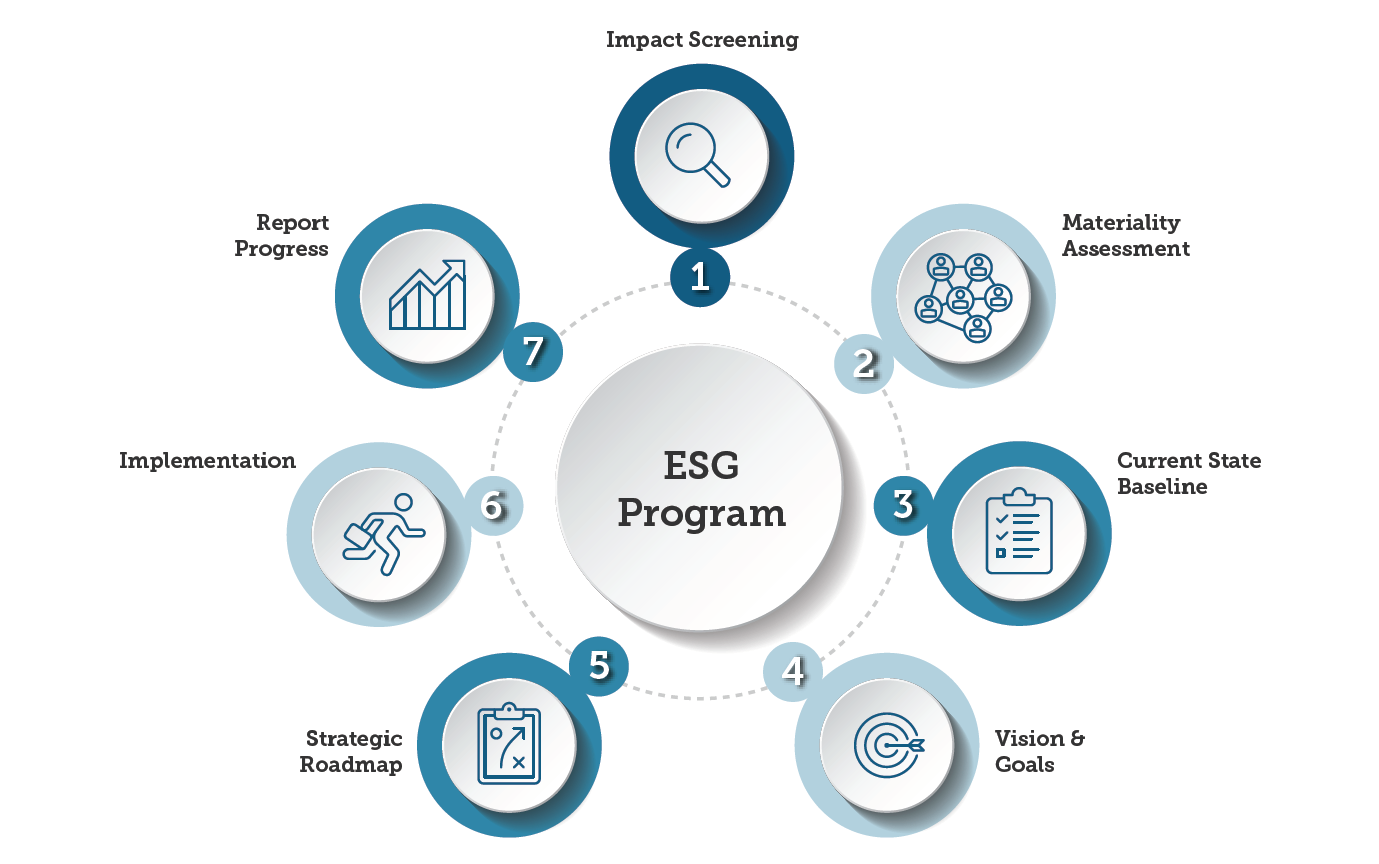ESG investing is a type of responsible investing that takes into account environmental, social, and governance (ESG) factors when making investment decisions. An increasing number of companies are learning how to start an ESG program as part of their sustainability efforts.
These programs can help businesses achieve their sustainability goals by reducing greenhouse gas emissions, improving employee relations, and promoting good corporate governance practices.
Table of Contents
How to Start an ESG Program
The first step in how to start an ESG program is to define your goals and objectives right from the beginning.
Once you have a good understanding of what you want to achieve, you can start to put together a plan of action.
Here are 5 steps to how to start an ESG program.
- Define your goals and objectives
- Research your options
- Create a plan of action
- Implement your plan
- Evaluate your progress
Research ESG Topics That Are Most Relevant to Your Company
As a company, it is important to be aware of the environmental, social, and governance topics that are most relevant to your business in order to create an ESG program.
Below is a list of ESG topics and how they may relate to your company.
1. Environmental impact
What is the environmental footprint of your company?
Are you working to reduce your carbon emissions?
Do you have sustainable practices in place?
2. Social responsibility
What are your company’s policies on social responsibility?
Do you have a commitment to diversity and inclusion?
Do you support charitable causes?
3. Governance
What are the governance structures in place at your company?
Do you have procedures in place to prevent and address corruption?
Are your executives and board members held accountable for their actions?
Each company will have different priorities when it comes to ESG topics, but it is important to be aware of all of them in order to make the best decisions for your business.
Develop a Plan of Action with Measurable Milestones
Your company is starting an ESG program and you want to ensure its success. You know that part of making any program successful is having a plan of action with measurable milestones.
But what goes into such a plan?
1. Goal Setting
What does your company hope to achieve with its ESG program?
Sustainability?
A smaller carbon footprint?
Less waste?
2. Research Your Competition
What are other companies doing in terms of ESG?
What practices have been successful?
What challenges have they faced?
 (Source)
(Source)
3. Create a Roadmap
Once you know what your goals are and what’s been done before, you can start mapping out your plan of action. This should include specific milestones that you can measure.
4. Get Buy-In From All Levels
It’s important that everyone in your company is on board with the ESG program. This means getting support from senior management, but also engaging employees at all levels.
5. Communicate Your Progress
As you achieve milestones, be sure to communicate this to employees, shareholders, and the public. This will help build support for the program and keep everyone updated on your progress.
Implement the Program Internally and Externally
Starting an ESG program can be a great way to improve your company’s environmental and social performance while also benefiting from the financial rewards that come with it.
However, it’s important to remember that successful implementation of an ESG program requires both internal and external engagement.
Internally, you’ll need to gain buy-in from all levels of your organization, from the C-suite down to front-line employees. This means communicating the benefits of the program and how it will improve the company’s overall performance.
You’ll also need to put together a solid plan for implementation, including setting targets and milestones.
Externally, you’ll need to engage with your stakeholders, including investors, customers, and suppliers. This means being transparent about your program and its goals and providing regular updates on your progress.
You’ll also need to make sure your program aligns with the ESG priorities of your stakeholders.
With both internal and external engagement, you’ll be well on your way to a successful ESG program.
Evaluate and Refine the Program Over Time
Your efforts should not end with how to start an ESG program. It’s a continuous process and, eventually, you’ll need to evaluate and refine the program.
Just like any new initiative, you’ll need to see how it works in practice and make adjustments as needed.
And as you refine your program, you’ll only make it more effective.
FAQs About How to Start an ESG Program
How do I start an ESG report?
- Define the goals for ESG reporting.
- Identify the target audiences for your ESG disclosures.
- Assess what ESG topics apply to your organization.
- Collect the ESG data.
- Choose a platform for disseminating your ESG report.
- Determine the frequency of ESG disclosures.
- Showcase improvement.
How do I get an ESG certification?
- Research which certification programs are available and select the one that best meets your organization’s needs.
- Review the program requirements and develop a plan for how your organization will meet them.
- Implement the necessary changes within your organization to meet the certification requirements.
- Submit an application to the chosen certification program and await approval.
What is ESG programming?
Environmental, Social, and Governance (ESG) reporting is different from Corporate Social Responsibility (CSR) in that it takes into account the environmental, societal, and ethical performance of a company or non-profit. In the corporate sector, ESG is often associated with investing.
Conclusion
The first step in how to start an ESG program is to define your goals. What does your company hope to achieve by implementing such a program?
Once you have set your goals, you can begin ESG research to find topics that are most relevant to your business and develop a plan of action accordingly.
Implementing the program internally and externally will be key to its success, so be sure to involve all stakeholders in the process.
Finally, don’t forget to evaluate and refine the program over time as needed – this will help ensure that it remains effective and impactful for years to come.





